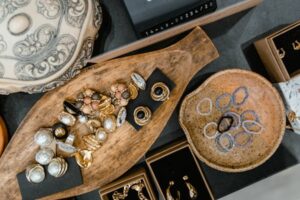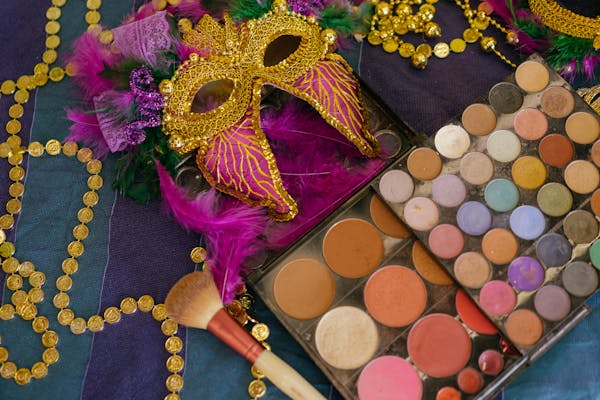Fashion Designer Deutschland: Discover Germany’s Hidden Gem in the Global Fashion World
Introduction to Fashion Design in Germany
Germany may be more famous for its cars and engineering, but the fashion designer scene is one you can’t afford to overlook. German fashion is a stylish blend of structure, creativity, minimalism, and innovation. It’s where precision meets passion.
You may know the name Karl Lagerfeld, but there’s a whole world of fashion beyond that flowing white ponytail. Germany’s fashion game is strong, understated, yet impactful. Let’s unpack why.

Why Germany is Rising in the Global Fashion Scene
Germany’s fashion industry is booming quietly but confidently. Unlike the flamboyance of Paris or Milan, German fashion champions sustainability, quality, and smart design. It focuses less on trends and more on longevity. It’s fashion that speaks—without screaming.
From Berlin’s gritty street styles to Munich’s polished sophistication, German fashion appeals to those who want substance with their style.

What Makes a Fashion Designer Stand Out in Germany
To make it as a fashion designer in Germany, it’s not just about sketching pretty clothes. You need to think like a businessperson, design with a purpose, and always, always consider sustainability. Authenticity, innovation, and precision are what the German market values most.
History of Fashion in Germany
Fashion Evolution: From Traditional to Trendy
German fashion has come a long way—from embroidered Dirndls and rugged Lederhosen to minimalist runway pieces and eco-conscious designs. Each era has shaped its aesthetic, with fashion often reflecting societal shifts.

The Bauhaus Influence
The Bauhaus movement didn’t just revolutionize art and architecture—it made its mark on fashion too. The clean lines, form-follows-function philosophy, and minimalism that Bauhaus stands for still echo in German fashion houses today.
Post-War Fashion & 1980s Punk
After WWII, Germany’s fashion industry began a bold transformation. The 1980s punk era, especially in Berlin, turned fashion into a rebellious art form. DIY outfits, wild hair, and bold accessories ruled the streets.

The Modern German Fashion Industry
Germany’s Fashion Capitals
- Berlin is known for its rebellious, avant-garde styles.
- Munich—the epitome of elegance and high-end fashion.
- Hamburg—Sleek, sophisticated, with a maritime edge.
Each city offers a different flavor, making Germany a surprisingly diverse fashion destination.
Key Fashion Brands in Germany
Hugo Boss
Perhaps the most internationally recognized German fashion label, Hugo Boss is all about clean cuts, sharp tailoring, and modern elegance. From office wear to red carpet glam, Boss has it all.

MCM & Escada
MCM brings luxury streetwear vibes with its iconic monogrammed bags, while Escada delivers high-end femininity with a touch of glam.
Top Fashion Designers in Germany
Karl Lagerfeld
Born in Hamburg, Lagerfeld was a global fashion force. As the creative director of Chanel and Fendi, he redefined what it means to be a fashion icon. His legacy continues to inspire designers worldwide.

Jil Sander
Known as the “Queen of Less,” Jil Sander made minimalism cool. Her designs are clean, simple, and effortlessly chic—an embodiment of German efficiency and elegance.
Wolfgang Joop
The founder of Wunderkind, Joop, combines flamboyant creativity with poetic storytelling in his fashion. His work feels like wearable art.
Emerging Designers to Watch
Keep an eye on names like William Fan, Marina Hoermanseder, and Dawid Tomaszewski. These rising stars are making waves with boundary-pushing designs and bold identities.

Fashion Weeks and Events in Germany
Berlin Fashion Week
Held twice a year, Berlin Fashion Week is edgy, diverse, and experimental. It’s where established names share space with fresh talent and sustainability gets center stage.
Frankfurt Fashion Week
A newcomer with serious ambition, Frankfurt Fashion Week is tech-driven and green-focused. It’s reshaping how we think about the business side of fashion.
Key Trade Shows
- Bread & Butter—a streetwear dreamland.
- Premium—Focuses on modern luxury.
- Seek—Tailored toward progressive men’s fashion.

Fashion Design Education in Germany
Best Fashion Schools in Germany
If you’re dreaming of becoming a fashion designer in Germany, here are some excellent schools:
- ESMOD Berlin
- HTW Berlin (University of Applied Sciences)
- AMD Akademie Mode & Design
These institutions offer everything from design and pattern-making to fashion business and branding.

How to Become a Fashion Designer in Germany
- Study Fashion Design—Get formal training.
- Build Your Portfolio—Showcase your creativity and versatility.
- Intern with Top Brands—Gain real-world experience.
- Attend Fashion Events—Network Like Crazy.
- Start Your Brand or Work for One—Leap!
Sustainable Fashion in Germany
Eco-Conscious Fashion Labels
Germany is leading the sustainable fashion movement in Europe. Brands like
- Archangels
- Jan & June
- Lanius
…are all changing the game with organic fabrics, fair labor practices, and recycled materials.

Berlin: The Green Fashion Hub
Berlin isn’t just edgy—it’s green. With events like the Green Showroom and Ethical Fashion Show, it’s become a hub for conscious fashion lovers and creators.
Opportunities and Challenges in the German Fashion Scene
Opportunities
- Growing Market: Germany has one of the largest economies in Europe.
- Global Reach: Fashion labels can quickly go international thanks to solid logistics and tech.
- Supportive Ecosystem: From trade fairs to government grants, support is out there.
 Challenges
Challenges
- Competition: Breaking into the German market takes guts and originality.
- Cultural Sensitivity: Understanding regional preferences is key.
- High Expectations: German consumers demand quality—no cutting corners.
How to Start Your Career as a Fashion Designer in Germany
Tips for Foreign Designers
- Learn German—even a little goes a long way.
- Get Accredited—Make sure your fashion degree or portfolio is recognized.
- Build Local Connections—Attend fashion shows, design meetups, and online forums.
- Start in Berlin— It’s diverse, welcoming, and buzzing with creativity.
Conclusion
So, is Germany the next big thing in fashion? We say, “It already is. From legacy names like Karl Lagerfeld to trailblazing sustainable startups, Germany is home to a fashion ecosystem that is innovative, inclusive, and incredibly stylish.
Whether you’re a budding fashion student or a seasoned designer looking for a fresh start, Germany might just be your runway to success.

FAQs
Q1: Who is the most famous German fashion designer?
Karl Lagerfeld, without a doubt. He worked with Chanel, Fendi, and his label, becoming one of fashion’s most legendary figures.
Q2: What is the best city for fashion in Germany?
Berlin is a hotspot for creativity and avant-garde fashion, while Munich leans towards luxury and tradition.
Q3: Can international students study fashion in Germany?
Yes, many schools offer programs in English and actively welcome international talent.
Q4: Is German fashion well-known worldwide?
Absolutely. Brands like Hugo Boss and MCM, as well as designers like Jil Sander, enjoy international fame.
Q5: What are some upcoming German fashion designers to watch?
Look out for William Fan, Dawid Tomaszewski, and Marina Hoermanseder. They’re redefining German fashion for the next generation.
